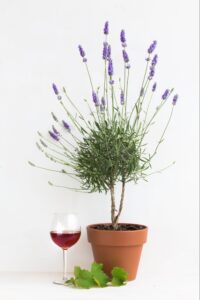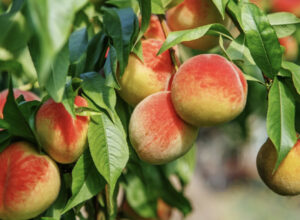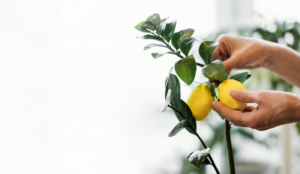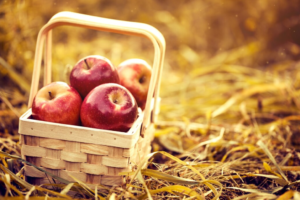Comprehensive Care Tips for Meyer Lemon Trees
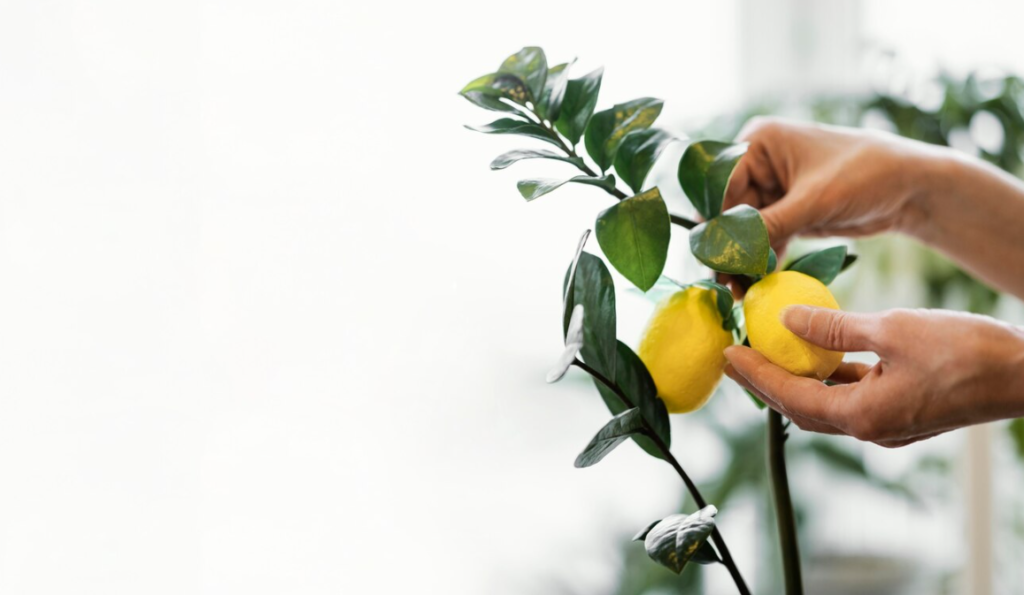
Lemon trees, especially the Meyer variety, can be a delightful addition to your garden or home. If you’re wondering how to care for a Meyer lemon tree indoors, you’re not alone. This popular citrus tree is loved not just for its fragrant flowers and luscious fruits, but also for its adaptability to indoor living. In this guide, we will delve deep into the care requirements, ensuring that even if your Meyer lemon tree is inside, it can thrive and produce the sweetest lemons.
Insights into Meyer Lemon Trees
Chic and in vogue, Meyer lemon trees (Citrus meyeri) made their debut in the United States after being brought from China in 1908. By 1975, the University of California unveiled a version that was resistant to both diseases and pests, which is predominantly cultivated today. These enhanced Meyer lemon trees are versatile, thriving in containers or directly in the soil. When planted, they can reach heights of up to 10 feet.
Although it boasts the title of being the hardiest among lemon fruit trees in cold conditions, it thrives best in consistently warm climates for optimal fruit yield or, alternatively, should spend winters indoors.
| Common Name | Meyer Lemon |
| Botanical Name | Citrus x limon ‘Meyer’ |
| Family | Rutaceae |
| Plant Type | Tree, shrub |
| Mature Size | 6–10 ft. tall, 4–8 ft. wide (Dwarf cultivars, 5-7 ft. tall) |
| Sun Exposure | Full, partial |
| Soil Type | Sandy, well-draining |
| Soil pH | Neutral, acidic |
| Bloom Time | Fall, spring |
| Flower Color | White, lavender |
| Hardiness Zones | 8b–11b (USDA) |
| Native Area | China |
| Toxicity | Toxic to pets |
How To Take Care Of Meyer Lemon Tree: Cultivating Like a Pro
Here are some essential guidelines for nurturing Meyer lemon trees:
- Opt for well-aerated, mildly acidic soil.
- Ensure the chosen location prevents water-logging, as the roots can’t tolerate prolonged dampness.
- Refrain from overwatering; for potted trees, water once the top couple inches of soil feels dry.
- During the growth season, nourish the tree thrice with a high-nitrogen or general-use fertilizer.
- In temperate regions like Florida or California, Meyer lemon trees are favorites for their low upkeep, suitable for both indoor and outdoor container cultivation. They’re a bit more resistant to cooler temperatures than Eureka and Lisbon lemon varieties, but they flourish best in protected and sunlit spots.
To avoid waterlogged soil, choose a location with optimal drainage. If you’re worried about pooling water, consider elevating the planting ground with a soil mound or situating the tree on an incline.
Setting Down Roots:
Whether you’re considering a pot or open soil for your Meyer lemon tree depends largely on your local climate. If you’re in zones 8b to 11b, ground planting is viable. A well-draining location is crucial, regardless of the method. For versatility, many opt to use a container even when keeping the tree outdoors throughout the year – this allows easy mobility when needed.
For those going the container route, select one that holds at least 5 gallons and stands 12-15 inches tall, ensuring it has sufficient drainage openings. Begin by part-filling the pot with a suitable potting mix (citrus-specific ones are recommended). Gently take the tree out of its original pot, teasing out tangled roots. Center it in the new pot and fill with the soil mix, ensuring the tree’s root crown remains exposed. Firm the soil and water the tree right away. Do note, container-grown trees might need water more often than those planted in the ground.
Sunshine Matters:
Like all citrus varieties, Meyer lemon trees have a penchant for sunlight. They flourish in direct sunlight, ideally soaking in a minimum of eight hours daily. Though they can tolerate some shade, full sun ensures optimal growth and fruiting.
Earthy Needs:
While adaptable to various soil types, what’s non-negotiable is good drainage. Meyer lemon trees favor acidic conditions, with a soil pH of 5.5 to 6.5, and they thrive in loamy or sandy compositions. Before you plant, a soil test can provide clarity on any adjustments required, using lime or sulfur to tweak the pH as needed.
Hydration Essentials:
Watering is crucial for all citrus species, especially those in containers. Aim to keep the Meyer lemon tree’s soil damp but not waterlogged. A simple test involves dipping your finger into the soil up to the second knuckle. Water when dry, ensuring excess water drains out. If the leaves begin to curl, it’s a clear signal of thirst.
Consider using pot risers to ensure efficient drainage and prevent water stagnation.
Climate Preferences:
Ideal temperatures for Meyer lemon trees range between 50-80°F. If you’re outside zones 8b to 11b, be prepared to move the tree indoors as colder months approach. In all zones, safeguard the tree from frost using ground-reaching covers to retain soil warmth.
A humidity level above 50% is ideal. Indoors, if your environment is too dry, employ a pebble tray or even a nearby humidifier to elevate moisture levels.
Nourishment:
From early spring to fall, nourish your Meyer lemon tree with high-nitrogen or slow-release general fertilizers. A typical regimen involves three evenly spread applications during this period. While they do appreciate occasional liquid fertilizers like compost tea or liquid kelp, it’s not mandatory.

Pollinating Indoor Meyer Lemon Trees
Meyer lemon trees, once they reach the age of about 5 years, should bear fruit consistently each year. If your Meyer lemon tree is positioned outdoors, either in your garden or a pot, natural pollination will typically occur due to local pollinators, considering this tree is self-fertile.
However, for those who house their Meyer lemon tree indoors during the flowering season, manual pollination might be necessary. For effective indoor pollination, you can use a delicate paintbrush to collect pollen (the yellow particles) from a particularly pollen-rich flower. Afterward, delicately brush this onto the stigma (the central bulbous tip) of other blossoms, ensuring some pollen particles remain. This manual process will pave the way for the development of small lemons.
Shaping Your Meyer Lemon Trees Through Pruning
Meyer lemon trees are quite accommodating when it comes to pruning, as their fruit-bearing ability isn’t dictated by their shape. Before initiating the pruning process, it’s ideal to let the tree grow to a height of 3 to 4 feet. It’s best to start pruning in the winter, after the tree’s fruits have matured and dropped.
Kick off the pruning process from the tree’s base, gradually moving upwards. First, discard any limbs that are dead or appear weakened. Next, remove branches that may be unable to support the weight of fruits. Subsequently, focus on clearing branches that hinder proper airflow to the core of the tree. After these essential steps, you can further shape the tree based on your aesthetic preferences.
Steps to Multiply Meyer Lemon Trees
Propagating lemon trees is relatively straightforward, especially when compared to other citrus types. Utilizing semi-hardwood cuttings is an effective method, and while this can be done any time of the year, success rates tend to be higher during the tree’s active growth phase in late spring or early summer. For the best results, select a cutting from fresh growth without any blossoms or fruits. Here’s a step-by-step guide to sprout a new Meyer lemon tree from a segment:
- Choose a healthy, mature plant and snip off a cutting, ensuring it measures between 3 to 6 inches.
- Strip the cutting of all leaves, flowers, or fruits, leaving only the top quartet of leaves.
- Immerse the snipped end in rooting hormone powder to guard against decay or infection.
- Use a 1-gallon pot filled with a pre-moistened, high-quality potting mix.
- Position the cutting into the soil, ensuring the treated end is well-embedded.
- Encase the pot and the cutting with a clear plastic bag to retain moisture. Set the pot in a well-lit spot. Consistently moisten the soil (avoiding oversaturation) and occasionally spritz the cutting. In roughly two months, you should observe root formation.
- After detecting roots, take off the plastic sheath and attend to your budding plant as usual. It’s best to house the young plant indoors or in a sheltered setting until the onset of the next spring.
Meyer Lemon Tree Care: The Repotting Process
Selecting an appropriate pot is crucial.
- Opt for one that has a diameter ranging from 12 to 17 inches, ensuring it has adequate drainage openings.
- Begin by partially filling this pot with new potting soil.
- Hold your lemon tree at its base, carefully extracting it from its existing pot. Gently unravel any intertwined roots and crumble any compacted soil as necessary.
- Introduce the tree to the new pot. Surround the rootball with potting mix, ensuring that only the tree’s uppermost root junction (crown) is visible.
- Provide the tree with water right away, and compact the soil lightly. It’s essential to note that Meyer lemon trees, once repotted, will need more regular hydration during the initial weeks.
Gathering Ripe Meyer Lemons
Lemon trees have varied fruit-bearing patterns depending on their environment. Trees kept indoors tend to yield fruit mainly during the springtime. In contrast, those planted in mild outdoor climates have the potential to offer a consistent lemon harvest throughout the year. One vital aspect to note, especially for those new to citrus tree care, is that citrus fruits like Meyer lemons mature and ripen only while they remain connected to the tree.
Identifying a ripe Meyer lemon is relatively straightforward. These lemons, when fully matured, take on a bright egg yolk color. Additionally, when you apply a gentle pressure, the fruit’s exterior will yield slightly, feeling soft under your fingers. This is a clear indication that it’s ready for harvest.
When it’s time to pick your lemons, approach the task with care. Use tools like scissors or a sharp knife to cleanly cut the fruit off its stem. This method ensures that the tree remains undamaged, safeguarding its health and ensuring continued fruit production in subsequent seasons. Remember, the goal is to enjoy the fruits of your labor while maintaining the well-being of the tree for future harvests.
Encouraging Blooms in Meyer Lemon Trees
While Meyer lemon trees aren’t primarily cultivated for their flowers, the blossoming phase is crucial for subsequent fruit generation. These trees typically take their time, with blossoms usually appearing around their third or fourth year.
- Ample sunlight is the linchpin for a blossoming Meyer lemon tree. All citrus species crave considerable light exposure, with at least eight hours daily being non-negotiable for blooming. If your landscape lacks such sunlit spots, contemplate placing your tree in a container. This mobility will let you relocate the tree, maximizing its exposure to sunlight throughout the day.
- Should your tree bask in adequate sunlight yet refrain from blooming, reassess your fertilizing regimen. Monthly fertilization strikes a balance—overfeeding can be just as detrimental as underfeeding when it comes to blossoming. Opt for a fertilizer tailored for citrus varieties.
- Temperature nuances also play a pivotal role in stimulating blooms. During winter and the onset of spring, subject your Meyer lemon tree to slightly cooler temperatures, around 60°F, to foster blossoming.
Challenges Faced by Meyer Lemon Trees
Meyer lemon trees, much like other citrus varieties, can be magnets for an array of pests such as whiteflies, rust mites, mealybugs, aphids, and scale insects. Although mature trees can often fend off a couple of infestations, younger trees might suffer severe damage. Typically, the first signs of pest invasions manifest on leaf undersides or on the fruits.
To mitigate these pest issues, initiate by trimming any dead or infected parts of the tree. Administer diluted horticultural oil, such as neem oil, spraying the tree regularly until the problem subsides.
While Meyer lemon trees generally demonstrate disease resilience and are comparatively hassle-free in their upkeep, they can still encounter certain challenges:
- Sagging Leaves: Drooping foliage on your Meyer lemon tree might signal the onset of Armillaria root rot, a prevalent fungal ailment. If untreated, this can prove fatal for the tree. A drooping tree requires immediate attention, and it’s prudent to consult a tree care specialist or professional lawn service to evaluate the severity and chart out remedial steps.
- Leaves Turning Yellow: Should you observe a yellow tint on the leaves, it often suggests overwatering. Excessive moisture can stifle the roots, inhibiting nutrient absorption. If your tree exhibits this yellowish hue, inspect the soil. If it’s damp, let it dry out entirely before your next watering session.
- Leaf Damage: Marks or deterioration on the underside of leaves usually hint at pest infestations. Pests, enticed by the sweet fruits of Meyer lemon trees—such as whiteflies, aphids, and scale—can wreak havoc. In the face of significant pest activity, it’s wise to engage a local pest control agency to strategize and address the specific threats to your tree.
Frequently Asked Questions
Q: Is a single Meyer lemon tree sufficient for fruit production?
A: Yes, Meyer lemon trees are self-pollinating, so only one tree is required to bear fruit. However, its chances of pollination increase when exposed to outdoor elements, especially insects and birds. For trees predominantly kept indoors, relocating them outside during the spring (post the last frost) can enhance fruit yield.
Q: What’s the maximum height a Meyer lemon tree can reach?
A: While Meyer lemon trees can attain heights of up to 10 feet, the more recent dwarf varieties usually grow between 5 to 7 feet.
Q: How many years does a Meyer lemon tree need to start fruiting?
A: Typically, a Meyer lemon tree starts bearing fruit after around four years of growth.
Q: Can Meyer lemon trees endure freezing temperatures?
A: Meyer lemon trees are susceptible to cold. If temperatures plummet below freezing, these trees are unlikely to withstand the cold for extended periods. If frosty conditions are anticipated, it’s crucial to shield the tree by enveloping it entirely.
Conclusion
In conclusion, understanding how to take care for Meyer lemon tree indoors is essential for both novice and seasoned gardeners aiming for a healthy and fruit-bearing plant. These trees, with their fragrant blossoms and delicious fruits, can be a delightful addition to any garden or home. With the right knowledge, patience, and care, you can ensure that your Meyer lemon tree thrives, providing bountiful harvests for years to come. Whether you’re just starting out or looking to refine your approach, always remember that knowing how to take care of a Meyer lemon tree is the cornerstone to its fruitful success.
